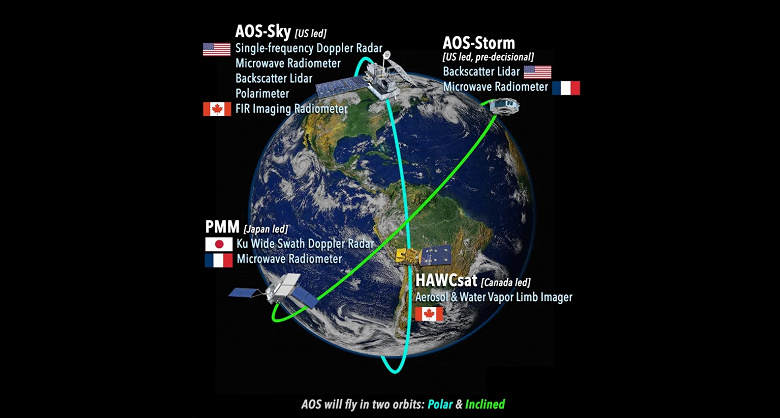The ambitions of the Earth System Observatory expeditions remain at the same level despite financial obstacles
NASA continues to actively work on the Earth System Observatory project, despite financial uncertainty. This project is a multibillion-dollar series of scientific expeditions aimed at studying the Earth. During the American Geophysical Union meeting in December, NASA representatives discussed further work on the Earth System Observatory project, which was designed to implement the five main parameters identified in the 2018 Earth Science Decade Review.
At the moment, four space expeditions are already at the early development stage. These include Atmosphere Observing System Storm (AOS-Storm), AOS-Sky, Surface Biology and Geology, and Mass Change, recently named GRACE-Continuity or GRACE-C to highlight the connection to the GRACE and GRACE-Follow On missions. Expedition 5 Surface Deformation and Change is in an extended exploration phase to integrate acquired data from the NASA-ISRO Synthetic Aperture Radar (NISAR) mission planned for spring 2024.
The purpose of all these expeditions is to answer a wide range of questions about the Earth and integrate the results of observations, scientific research and practical aspects. This series of expeditions represents NASA's core scientific research program, planned in parallel with other larger research projects that form an integral scientific ecosystem.
However, the implementation of all these missions requires significant financial investments. Approximately $3.5 billion is expected for the first four missions, including $1.99 billion for AOS-Storm and AOS-Sky. However, Karen St. Germain, director of NASA's Earth Science Division, stressed that several international partners will contribute $1.2 billion by providing scientific instruments and spacecraft. This collaborative approach will allow us to achieve greater results and scientific discoveries than would be possible if each country worked separately.
All missions are scheduled to launch between the late 2020s and early 2030s. However, the exact timing will depend on financial capabilities. Currently, NASA has requested $287,000,000 for the Earth System Observatory mission for fiscal year 2024, and by 2026 it is expected that the budget will exceed half a billion dollars per year for the development and implementation of space missions for this project.
NASA's applied earth science funding request for 2024 exceeds $2.47 billion and is $280,000,000 more than allocated for 2023. At the same time, NASA faces budget restrictions established by a legislative agreement, according to which costs for such programs must remain at the level of the 2023 budget, which was previously fixed. The Senate bill provides about $2.22 billion for geosciences, while the House bill offers only $2 billion.
As yet, funding for the Earth System Observatory is not included in the House bill, but the accompanying document notes satisfaction with the progress of work on the project. The document states that it is expected that the formation of all five Earth System Observatory missions will continue with the level of financial support characteristic of this project.
St. Germain noted the uncertainty that the Earth System Observatory and other programs could face as NASA funding remains at 2023 budget levels through Feb. 2. At a November 29 meeting of the National Academies Committee, she noted that NASA had already reached the limits of recommendations made in a decade-long review to overcome financial challenges, including a judicious mix of large and small missions.

